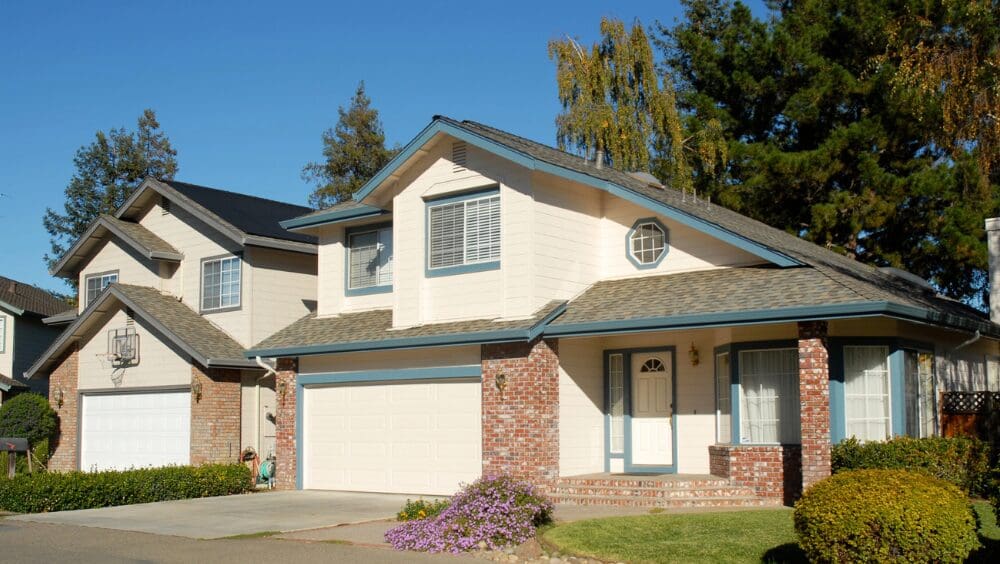
When you bought a house with less than 20% down, your mortgage lender tacked on the extra cost of private mortgage insurance (PMI) as a standard precautionary measure. Now that you’ve owned the house for a decent chunk of time, you’re wondering: “Can I cancel PMI if my home value increases?” According to the National Association of Realtors, the median down payment in 2019 was 12% (and just 6% for first-timers), which means lots of Americans are paying PMI. It’s incredibly common! But let’s be honest — no one loves that expense bundled into their mortgage. Thankfully, it’s temporary. And the sooner you can get rid of PMI, the sooner you can reduce your overall housing payments. You’re correct to think that the rising value of your home might be your ticket out of paying PMI, if the timing is right. We spoke to borrowers who parted early with PMI — and combed through primary governmental resources — to bring you our guide to getting rid of this annoying payment asap based on your gained equity and property value. First, a little background: PMI is typically required on conventional loans where the borrower puts down less than 20% of the property’s contract price. (The term “conventional” refers to any loan that’s not part of a government program). Ultimately, PMI protects lenders if you default on the loan. If — for any reason — you’re unable to keep up with your mortgage payments and the property goes into foreclosure, PMI will help to cover the balance of the outstanding loan when the home is sold at auction. Most homeowners who carry PMI have borrower-paid private mortgage insurance, which they pay as an additional monthly fee with their mortgage. Under rules outlined by the Homeowners Protection Act (PMI Cancellation Act) of 1998 or HPA, you should be able to initiate PMI removal once the principal balance of your mortgage drops to 80% of the original value of your loan. But a simple “please remove my PMI” call to your servicer is not enough. Homeowners will need to jump through several hoops with their lender and meet the baseline qualifications to have PMI removed, including: Generally, you can request to cancel PMI when you reach at least 20% equity in your home. You might reach the 20% equity threshold by making your payments on time per your amortization schedule for loan repayment. But you also may get to that 20% benchmark faster thanks to rising property values in your area — or by investing in home improvements. Let’s say you purchased a lovely home for $200,000 a few years ago with less than 20% down, so you’re paying PMI. You notice that local news reports indicate that property values are rising. It’s possible that your home is worth more now than when you originally purchased it. Based on some initial research, you estimate the current value to be $265,000. If it’s worth what you think — and your outstanding mortgage balance including principal and interest is less than $212,200 (or 80% of $265,000) — then you may be able to remove the PMI because it means you’ve reached 20% equity. That’s a higher debt threshold than 80% of $200,000 (your original purchase price), where your outstanding mortgage balance would be capped at $160,000 to qualify for PMI removal. In the former case, rising home values have helped you build equity and increased your stake in the property, making you a potentially lower-risk borrower. And all you had to do was keep making mortgage payments and watch your home value grow. The same concept applies if you’ve made any major home improvements, such as a kitchen, bathroom, or main bedroom remodel, to increase the appraised value of the home. When the appraised value of your home goes up since the time of purchase, it means your equity has grown and it may allow you to lose the training wheels of your mortgage (we’re talking about PMI!) So, having a solid idea of your home’s value and how it’s changed can help you track when it might be time to ditch the PMI. But a simple hunch won’t be enough to get your lender to remove it. Calling your lender up and telling them about all the recent sales in your neighborhood won’t convince them to ditch your PMI. You’ll need some ammo for this argument, most likely a professional appraisal or a broker price opinion (BPO), depending on what state you live in. Before jumping into the appraisal or BPO, take a beat and consider the following: Bottom line: Learning of your home’s increased value is exciting, but that alone isn’t enough to get rid of PMI. Get proof, and ensure going through with an appraisal makes financial sense for you. The HPA rule of 1998 also grants homeowners the right to have their PMI removed automatically “on the date when your principal balance is scheduled to reach 78 percent of the original value of your home,” explains the CFPB. However, a homeowner must be current on their payments for this automatic removal to occur. Other than staying current with your payments, this automatic removal requires no action on the homeowner’s part. However, you will end up paying PMI longer than you would have if you’d successfully requested to cancel at 80%. So, it pays to keep track of where you are in your mortgage payments and when you’ll hit an 80% LTV ratio. Washington DC Marketing Consultant Regine Smith says she discovered this the hard way. Her mortgage balance was far below the 78% figure, and her lender still hadn’t removed PMI. “It was an uphill battle,” says Smith. “I did a rant on Twitter that went viral. It led to someone in customer care taking another look at my case.” Knowing your rights when it comes to PMI can help you avoid paying the insurance long after it’s due to be removed. You have to wait to cancel PMI because the extra cost is meant to protect the lender until you’ve gained more equity in your home. Unfortunately, it is for the lender’s benefit alone and it will not help you in the event of foreclosure. But until a homeowner hits h that 20% equity benchmark, they’ll have to make those PMI payments in full. If you have a loan from a government program, such as an FHA or USDA loan, the extra insurance you pay to your lender is just called Mortgage Insurance (MI), and it comes with different rules regarding removal. For example, if your down payment on a home purchased with an FHA loan was less than 10%, you cannot cancel MI unless you refinance with a non-FHA loan. This applies to any FHA loans obtained after 2013. When in doubt, reach out to your mortgage servicer to learn the specifics about cancelling MI on your specific loan type and to inquire whether any options for removal are available. The cost of PMI typically ranges from 0.5%-1% of your loan amount annually (though it can be higher or lower depending on your loan-to-value ratio). On a $250,000 mortgage, that’s $1,250-$2,500 per year. In the grand scheme of all your housing costs, it might not seem like much — but on top of your mortgage payment, insurance, property taxes, and HOA fees, it adds to the burden. If you can cancel your PMI even 12 months before it’s automatically scheduled to end, you could eliminate that annual cost and hopefully put that money toward something way more fun than insurance. Do a little homework, then contact your mortgage servicer. Armed with information from this guide, you’ll be ready to make a cancellation request, inquire about scheduling an appraisal, or at least find out how many more months until you’re free of PMI payments. It will be a day to celebrate!What is private mortgage insurance?
How do I know if I qualify to cancel PMI?
What does your home value have to do with it?
Proving your home’s value: Your lender won’t take your word for it
Automatic PMI removal: Know your rights
Why do I have to wait to cancel PMI?
What about mortgage insurance for FHA loans?
Canceling PMI: How much will you save?



